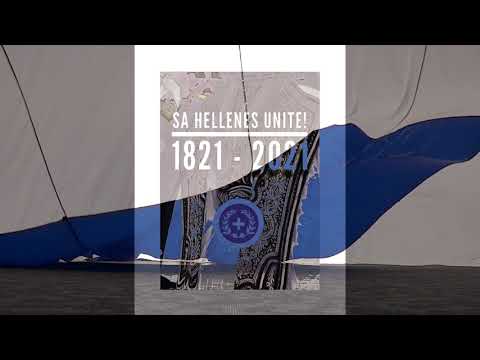Greek Flags

In the identical Spanish atlas this “plain” tetragrammatic cross flag is offered as “the Flag of Salonika” and “the real Greece and Empire of the Greeks “. The association that includes the Cross of St. George is documented only in the Spanish atlas, and most probably combines the arms of Genoa with those of the Byzantine Empire, and was likely flown solely in Constantinople. Pseudo-Kodinos records using the “tetragrammatic cross” on the banner borne by imperial naval vessels, while the megas doux displayed a picture of the emperor on horseback. Although the official design wasn’t adopted until 1978, Greece never appeared to be with no flag or some sort.
Notably, nonetheless, there isn’t a official designation concerning the the shade of blue that the flag should be. The current flag’s design was first officially designated as Greece’s naval flag in 1830, though it had been unofficially used all through the country since the begin of the Revolution in 1821. The country’s present flag is iconic — the distinction between the rich blue and stark white, symbolizing the sky and sea, immediately calls the country it represents to thoughts and sparks delight within the heart of each Greek.
The flag is held on a white flagstaff on the prime of which there is a white cross. Most people don’t realize that the current Greek flag wasn’t formally adopted till December 22, 1978. Prior to that, the flag has had a number of designs with a couple of similarities. Prior to 1978, the flag may or might not have contained the signature stripes and maybe would have solely contained the white cross with the blue background. When King Otto from Bavaria was in power, he added his family’s coat of arms to the flag.
Flag Of The Pinnacle Of State
For occasion, the official flag of the Kallergis Family of Crete seems almost precisely the identical as Greece’s flag. Was the Modern Greek Flag tailored because of this explicit family? Since there aren’t any identified information of exactly how the trendy flag was adopted, it’s difficult to know why, exactly, the flag appears the best way it does right now. In Greece, the flag has two names -Η Γαλανόλευκη or Η Κυανόλευκη – translated as “The Blue and White” or “The Azure and White” in English.
The cross symbolizes Eastern Orthodox Christianity, which is the principle faith of Greece. The 9 stripes are mentioned to represent the syllables of the phrase, “Freedom or Death”. Alternate theories state that the 9 stripes symbolize the 9 Muses or the 9 letters of the word “freedom”. The Greek flag originated through the uprising against the Turks in 1821, when a blue flag with a white cross was raised to be able to oppose the Ottoman crescent. The cross was moved to the top left part of the flag and white and blue stripes had been added.
The “washed out” blue belongs to the defunct and now non-existent coat of arms of the Kingdom of Greece. The protocol guide for the London 2012 Olympics (Flags and Anthems Manual London 2012 ) supplies suggestions for national flag designs. Each NOC was sent an image of the flag, together with the PMS shades, for their approval by LOCOG. Once this was obtained, LOCOG produced a 60 x 90 cm version of the flag for additional approval.
Greece Flag Svg
The national anthem, together with its music, was printed for the primary time in London in 1873. Since it was first established, the logo has undergone many modifications in shape and design, primarily as a result of modifications of regime. The solely minor modifications made to the banner’s design all through the years consisted of including symbols of the Greek monarchy to it. The monastery plays a significant role in Greek history, as some of the most necessary heroes of the Greek Revolution, including Theodoros Kolokotronis and Andreas Miaoulis, spent time on the holy web site. The first model of the flag was crafted and raised by monks in the Evangelistria Monastery on the island of Skiathos in 1807.
More current research has justified this view, connecting this image solely to private and dynastic emblems of Byzantine Emperors. The Greek national emblem was provided for by the Constitution of Epidaurus on January 1, 1822 and was established by decree on 15 March of the same yr. The blue color in the coat of arms is similar as the one used within the Hellenic flags, that’s dark blue.

During the time of King Otto I Mittelblau modeled after the crest of the Bavarian Wittelsbach was used. The Greek army junta from 1967 to 1974 used a really dark blue. In most cases, we can see that the flag in an ultramarine blue, so additionally on the website of the Greek President. Greek Orthodox religion, were adopted for two variations of the national flag.
Present And Historical Variants Used Outdoors Greece
At the flag’s centre, the royal coat of arms of the new dynasty (Schleswig-Holstein-Sonderburg-Glücksburg) would feature. By a brand new royal decree of three June 1914, the distinguishing flags to be utilised by the assorted members of the royal family had been described. The king’s flag was outlined as being sq. in shape and, as in earlier flags, featured the coat of arms of the king on a Greek white-cross-on-blue.